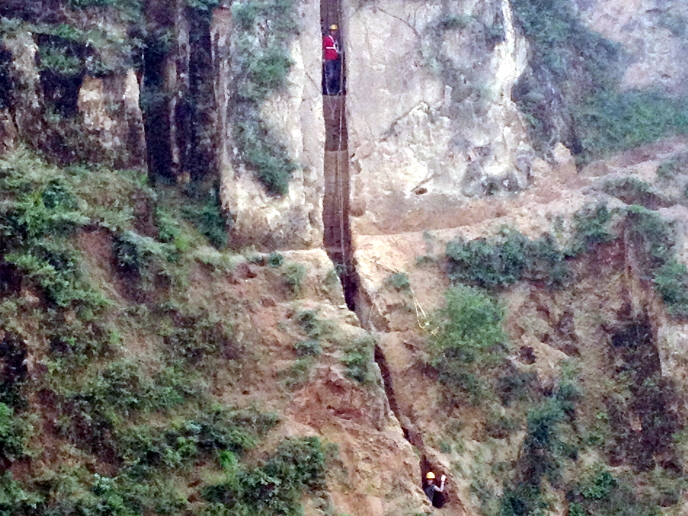Invisible matter coming to light
Long ago, Einstein recognised the potential existence of gravitational lensing, a consequence of his theory of general relativity. According to the theory, matter interacts gravitationally with any nearby objects, even with light. Consequently, dark matter lying between a telescope and a distant light source bends the light from the source as it travels toward the observer. Scientists on the EU-funded project 'Cosmological applications of lensing and intrinsic correlations of ellipticities' (CALICE) focused on studying gravitational lensing in their quest to determine the Universe's make-up. Observing the coherent distortions on a large number of background galaxies at various distances reveals the dark matter distribution at different stages of the Universe's expansion. This tomographic weak lensing thus contains information about the expansion properties and consequently on dark energy and possible gravity effect deviations from Einstein's theory. The methodology adopted in CALICE was based on developing a parameter estimation pipeline, made of a set of programming codes. This pipeline is able to predict the corresponding gravitational lensing signal from the dark energy model it includes. It can also be fed with observed or simulated data. Theoretical modelling and data analysis are merged in a statistical process to evaluate the likelihood of the theoretical models. Based on this methodology, project members studied the viability of modified gravity models by modifying parameters in the general relativity equations. However, the observed gravitational lensing signal could be well explained with the standard gravitational theory. Furthermore, to provide an explanation for the increasing rate of the Universe's expansion, CALICE considered dark energy models containing late-time oscillations. The project also attempted to study weak lensing effects on the cosmic microwave background radiation; it succeeded in producing its own measurements. Project data will contribute to the large collaborative effort expended in the European Space Agency (ESA) Euclid Mission. This will map the gravitational lensing signal with high resolution and determine the need for dark matter or modifications in the theory of general relativity.





